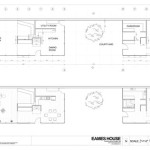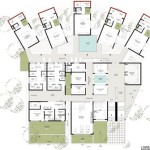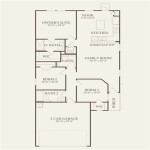French Colonial Plantation House Plans: An Architectural Legacy
French Colonial plantation houses, with their distinctive architectural features and historical significance, continue to fascinate and inspire designers and homeowners alike. These grand structures, scattered across the Caribbean, Louisiana, and other former French colonies, embody a unique blend of European and local influences.
When planning a French Colonial plantation house, several essential aspects should be considered to capture the essence and authenticity of this architectural style.
1. Symmetrical Facade
French Colonial plantation houses are characterized by their symmetrical facades, creating a sense of harmony and balance. The main entrance is typically located in the center, flanked by matching windows on either side. The roofline also follows a symmetrical pattern, with a central gable or hip roof and smaller gables on the sides.
2. Elevated Foundations
To protect from insects and moisture, French Colonial plantation houses were often built on elevated foundations. This feature, known as a "basement story," creates a crawlspace that allows for ventilation and airflow. The foundation walls are typically made of brick or stone, while the upper floors are constructed with wood or stucco.
3. Wide Verandas
Generous verandas are a defining feature of French Colonial plantation houses. These covered porches wrap around the perimeter of the house, providing shade and creating a welcoming outdoor living space. The verandas are supported by columns or pillars, adding a touch of elegance and grandeur.
4. High Ceilings and Large Windows
French Colonial plantation houses feature high ceilings that enhance the sense of spaciousness and grandeur. Large windows, often reaching from floor to ceiling, allow for abundant natural light and ventilation. The combination of high ceilings and large windows creates a bright and airy atmosphere.
5. Ornate Millwork
French Colonial plantation houses are known for their elaborate millwork, which adds a touch of sophistication and refinement. Intricate moldings, cornices, and architraves adorn doorways, windows, and ceilings. These decorative elements contribute to the overall aesthetic appeal of the house.
6. Influence of Local Materials and Craftsmanship
French Colonial plantation houses reflect the influence of local materials and craftsmanship. In the Caribbean, for example, coral stone was often used for construction, while in Louisiana, cypress and oak were popular materials. Local artisans incorporated their own techniques and designs, resulting in a unique blend of European and local influences.
7. Historical Context
Understanding the historical context of French Colonial plantation houses is crucial for preserving their authenticity. These structures played a significant role in the economic and social history of their respective regions. Researching the history of a particular house can provide insights into its original design, purpose, and the people who lived there.
French Colonial plantation house plans offer a glimpse into a rich architectural遗产. By incorporating the essential aspects discussed above, architects and homeowners can create new structures that honor the historical significance and timeless elegance of this architectural style.

French Colonial House Plans Plantation Style Home

13 French Colonial Collection Ideas Homes House

House Plan 86207 Plantation Style With 3805 Sq Ft 4 Bed 3 Bat

French Colonial House Plans Plantation Style Home

Colonial Plantation Style House Plan 137 1375
Colonial Plantation Style House Plan 137 1375

Plantation House Plans Deep South Style Home Floor

Colonial House Plans Southern Floor

Colonial House Plans Floor For Homes

Plantation Southern Style House Plans








